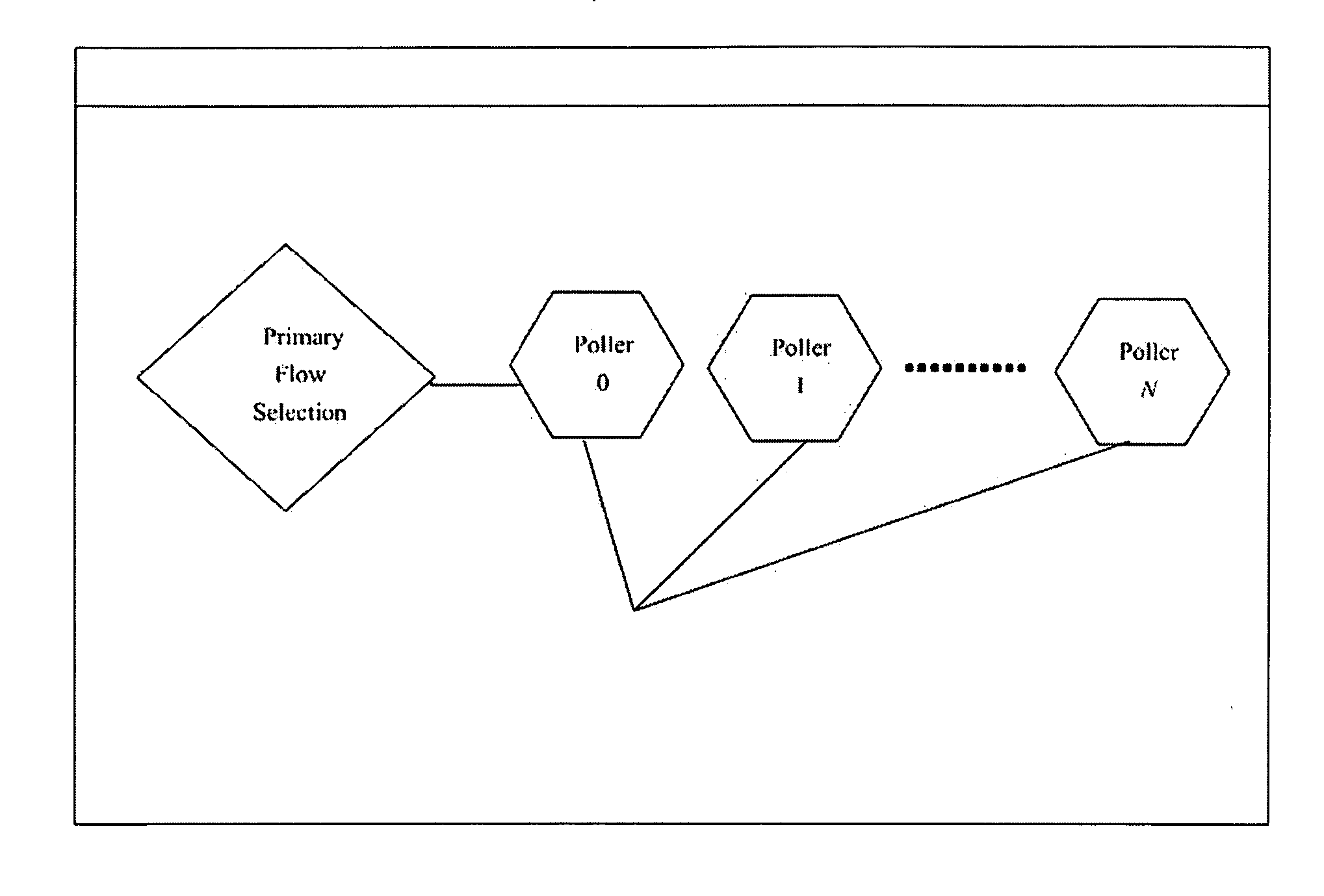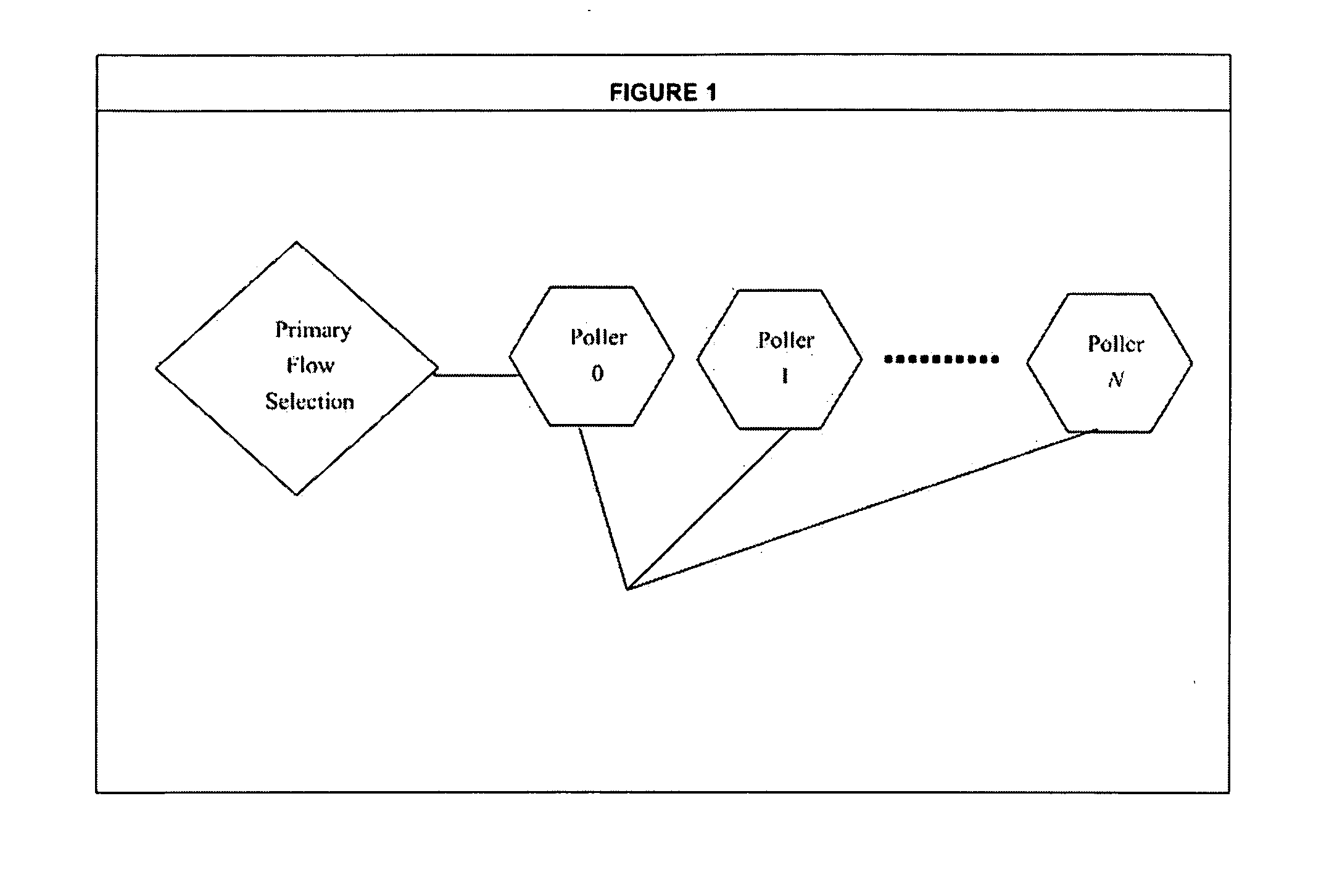High Performance, High Bandwidth Network Operating System
a network operating system and high-bandwidth technology, applied in data switching networks, instruments, program control, etc., can solve problems such as the challenge of evaluating the most effective and efficient means to secure your network, and the cost of systems with proprietary asic and fpga hardware components, and the difficulty of achieving high-efficiency systems with traditional open-source and commodity servers
- Summary
- Abstract
- Description
- Claims
- Application Information
AI Technical Summary
Benefits of technology
Problems solved by technology
Method used
Image
Examples
Embodiment Construction
[0047]FIG. 5 illustrates an embodiment generally relating to an intrusion detection system. The Poller will pull the packets from the NIC and in conjunction with the Primary Flow Selection process will direct packets into individual flow subrings based on established tuples. The Flow Aggregator then delivers to the API a set of flows based on a tuple whereby an intrusion detection system can access these flows to inspect and analyze them efficiently with some of the heavy lifting of sorting random packets into a group / flow, ordering them into their proper sequences so the IDS can apply the correct context to the communication. The invention in FIGS. 1, 2, 3 and 4 collectively allows multiple instances of an IDS to be run with different configurations. In essence, the present invention allows an IDS to act like a distributed system in that each instance can concentrate on a different subset of attacks.
[0048]FIG. 6 illustrates an embodiment generally relating to an extrusion detection...
PUM
 Login to View More
Login to View More Abstract
Description
Claims
Application Information
 Login to View More
Login to View More - R&D
- Intellectual Property
- Life Sciences
- Materials
- Tech Scout
- Unparalleled Data Quality
- Higher Quality Content
- 60% Fewer Hallucinations
Browse by: Latest US Patents, China's latest patents, Technical Efficacy Thesaurus, Application Domain, Technology Topic, Popular Technical Reports.
© 2025 PatSnap. All rights reserved.Legal|Privacy policy|Modern Slavery Act Transparency Statement|Sitemap|About US| Contact US: help@patsnap.com



